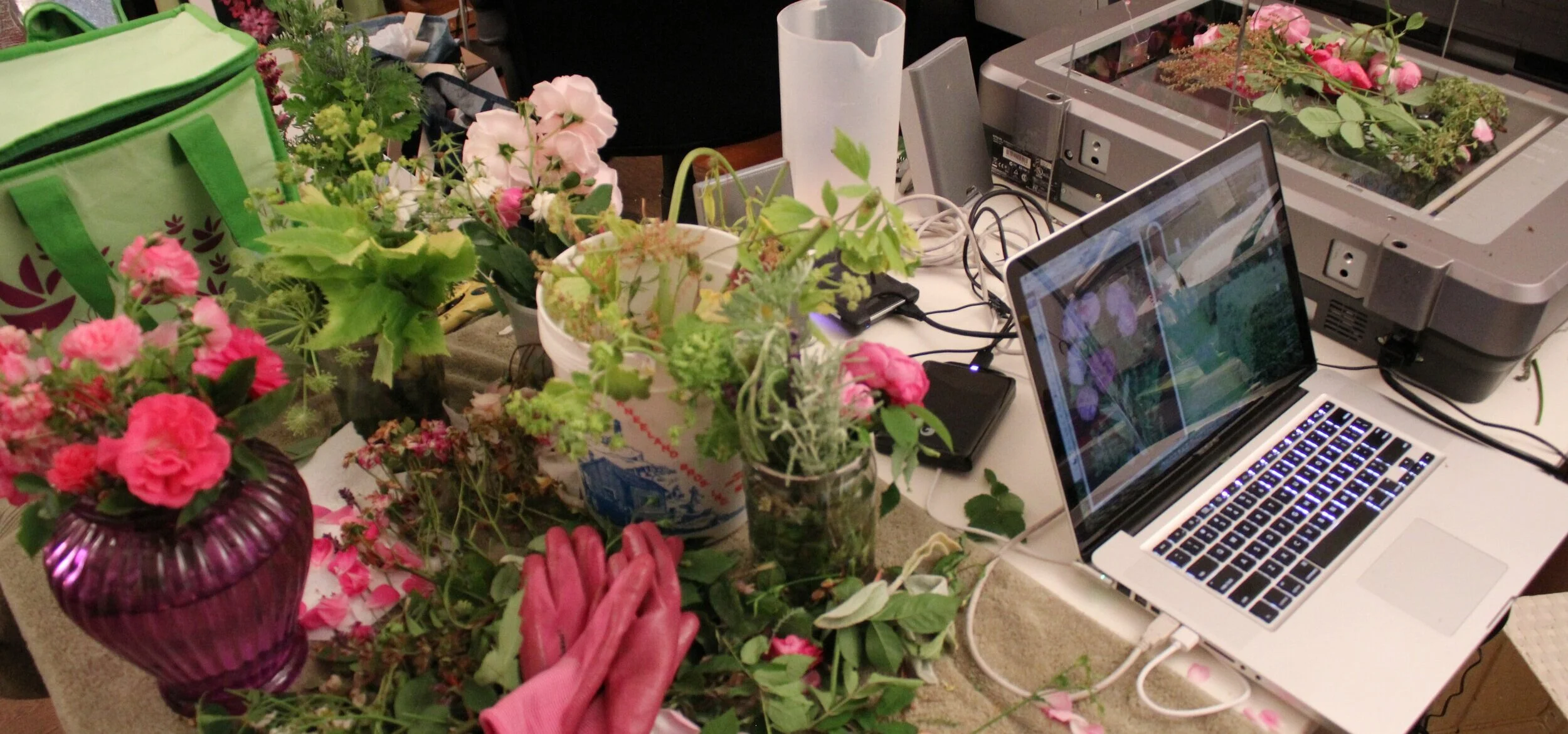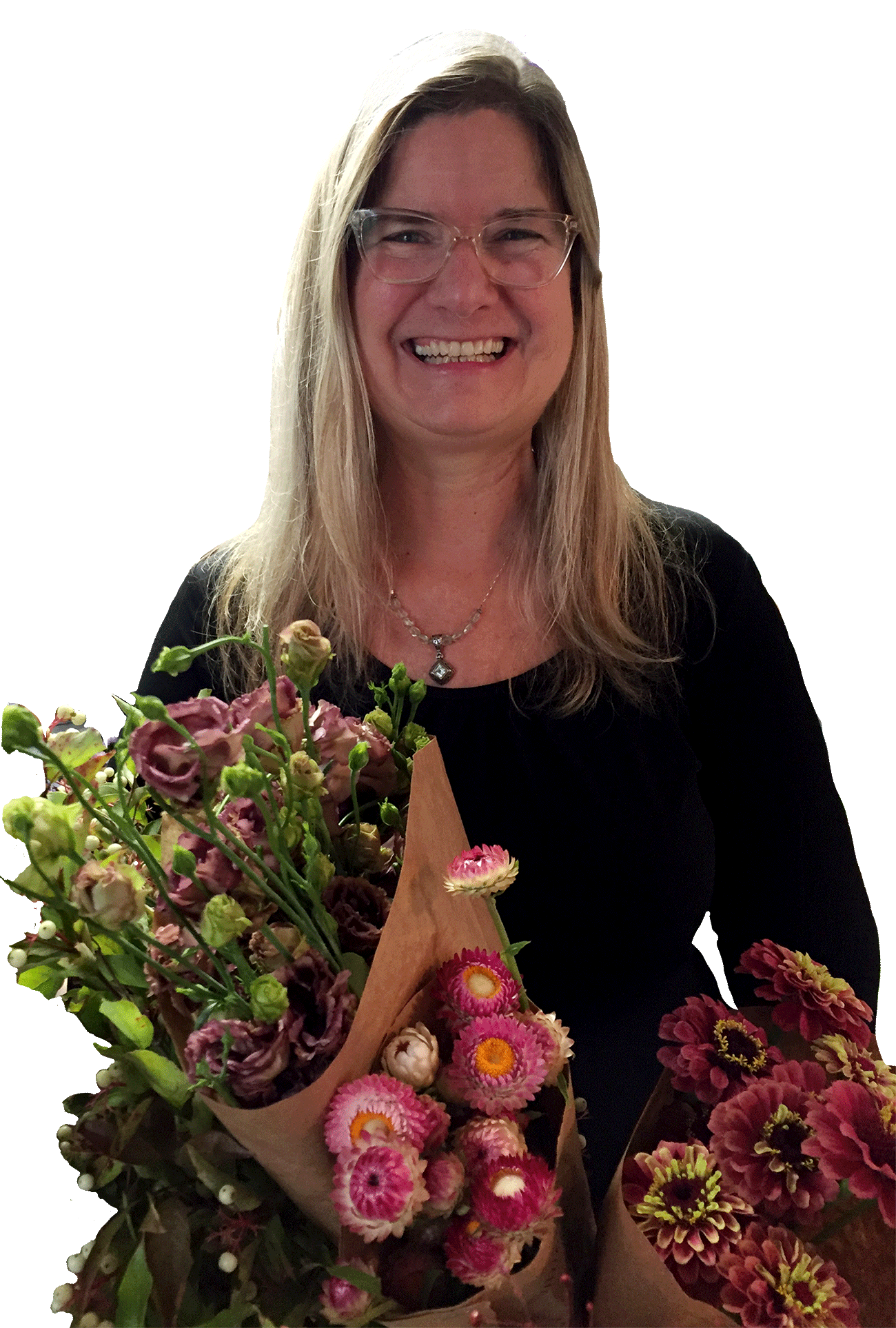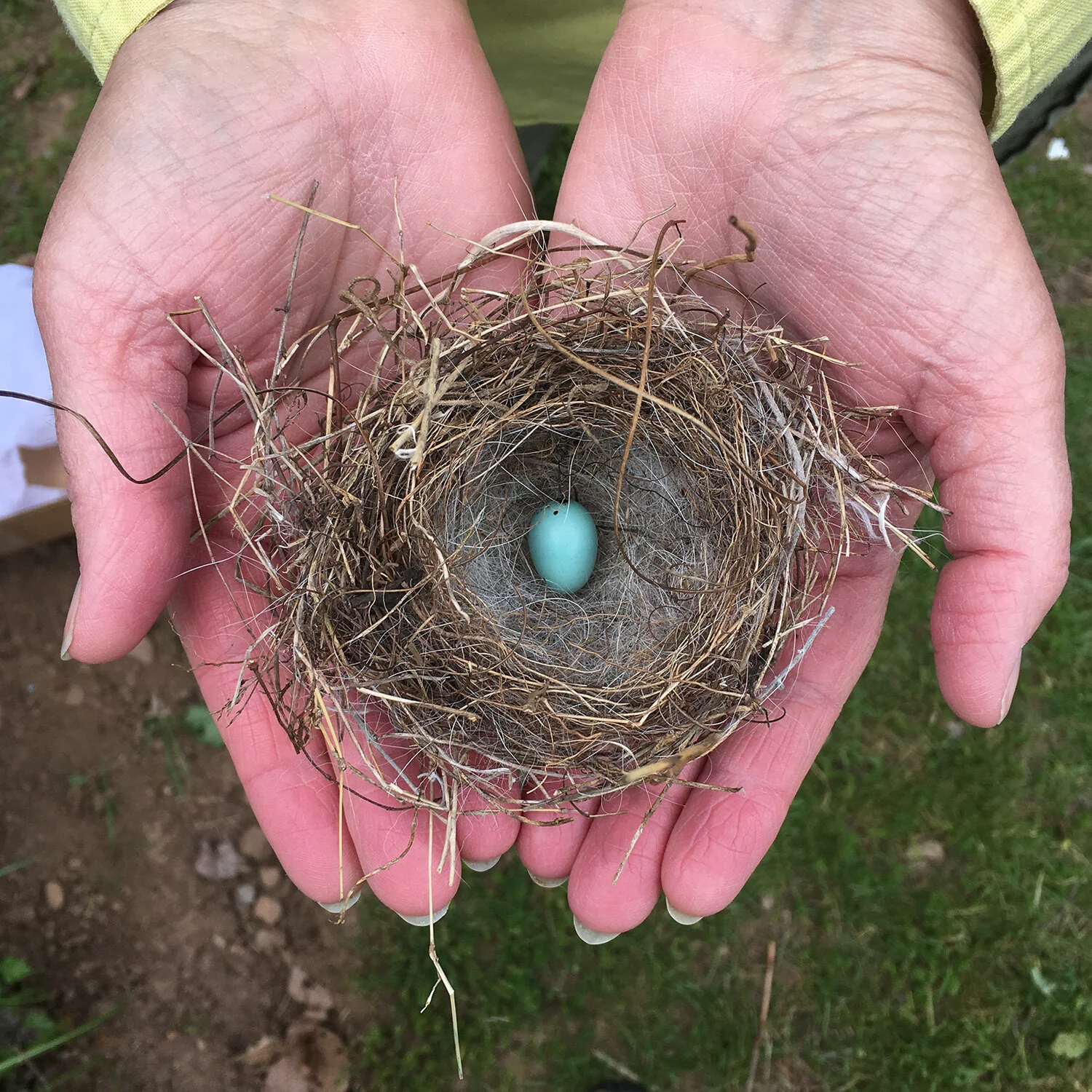
Made with a Canon Color Laser Copier in 1991
2002 Local Newspaper - Click to Read
Peonies and Leucojum on my Scanner
Local Flowers Splurge! 2019
Natural Companions Promo Demo - Abrams Books
My Story
I am often asked, “What started you doing this?”
From 1989-1991 I took a course called “Reprographics for the Visual Artist,” offered by a local art school and a local commercial / retail copy center. In the three years that I took that class I used various objects, papers and fabrics to create art on reprographic equipment unavailable to the public. In the final group show I displayed a series of images called “Garden Delights” made by placing plants and fabric on the glass of a color laser copier. When that wonderful opportunity ended, at the end of my day as a full-time public school art teacher (since 1978*), I studied monotype printmaking, ceramic mosaics, videography and painted in my attic studio.
Real life interrupted my art life, in 1996 when my studio became bedrooms and a den for our sudden family. With new responsibilities and diminished workspace, my opportunity to create art seemed to disappear. But as my life changed, once again, I changed media. In 1997, when I approached our school system’s technology director about online display of student work, he introduced me to the flatbed photo scanner in his office. Immediately, I compared using that scanner to my experience with the color laser copier. Ecstatic about the potential for object scanning from home, that evening, my husband and I bought our (my) first computer, flatbed photo scanner and an inkjet printer. My neighbor Richard was first to open his garden to me for scan worthy cuttings. My friend Michael Russo (current co-owner / operator Trout Lily Farm) has been growing what I scan since “forever.” In 2002, an article (see my About page) in our local newspaper prompted an overwhelming amount of invitations by gardeners asking me to come, take their plants and make my art! Picking with a purpose at public gardens has been a thrill and a privilege. I can’t imagine meeting book deadlines without the assistance of my public garden horticulturist friends.
“Is this Photography?”
I think it is. There is Pinhole Camera Photography and there is Scanner Photography. The significance is in the quality and resonance of a photograph anyway, and not the expense or operation of the machine that made it. The high-resolution detail and consistent light and depth of field captured as the scanner sweeps under whatever rests still on its glass, creates an image which is uniquely accurate and interesting. Of course, move an object as it is scanned and get entirely different results. Other than when teaching or for casual demonstrations, I am conservative (and perfectionist) regarding technique in my work. I have been using a large format flatbed photo scanner and a 24” wide archival inkjet printer in my home studio since around 2004.
“How and where do you get what you scan?”
When collaborating with Ken Druse (see my Books page), I arrived at gardens, both public and private, with the author’s plant list in hand, on the hunt for particular plants to illustrate a story about plants as individuals or how they relate to each other in the garden.
Sometimes I am asked to distill a sense of place, to make a kind of garden portrait or sampler for display in someone’s home, or in remembrance because they are moving. There are several gardens to which I have “an open invitation” as resource. My admiration for the work of horticulturists, gardeners and farmers is immense and so is my gratitude for their generosity. And so many of them are now my treasured friends. I have also been a beachcomber since childhood, forage in the woods, borrow natural objects like nests from other “collectors.” In this phase of life, I regularly splurge on CT farm grown cut flowers!
“How do you take the photograph?”
Cued by the shape of the object or plant in my hand and my idea of how it will relate well to others, I carefully arrange each element of a composition. Each item is placed face down on or towards the glass of the lidless scanner. With lights on, I compose an image incrementally, preview scanning until satisfied, then switch off the lights (for black background) and raise the resolution to 600 dpi for the final pass of the scanner. Finally, all digital images are adjusted for tone, color, sharpness and are meticulously retouched.
“Why do you prefer to use a scanner?”
This is the way I play, in a way, just like when I was a kid… I made houses of playing cards, arranged the knick knacks in my room and played pick up sticks with friends. I joke that scanning keeps me sane because it’s the only place where I feel like I can still have some kind of control, often soothed by gorgeous, mostly fragrant plants. I figure my studio time must be what the garden is to a gardener.
I hope the viewer is drawn into and explores my work like a child to the garden. The mission of my work is to honor nature’s beauty.
*I retired from teaching Art in 2011 but still very much enjoy visiting garden clubs with my demonstration presentations.





